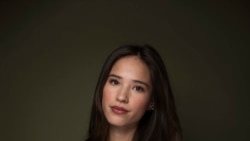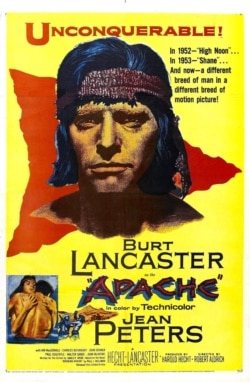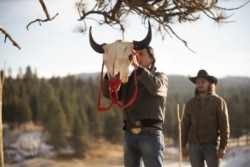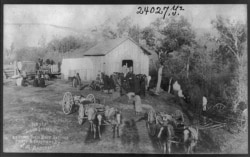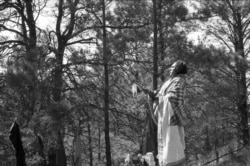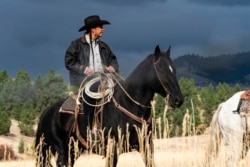Native Americans have long been misrepresented in film and television. The successful television series Yellowstone, which recently concluded its fourth season on the Paramount+ network, promised to be "an authentic portrayal of Native life in America."
Some Native Americans say the show didn't go far enough in its mission, while others say it went too far.
Casting draws criticism
Yellowstone is a modern Western drama. Created by Taylor Sheridan and starring Kevin Costner, the series focuses on the lengths to which ranchers, Native Americans, energy companies, environmentalists, bureaucrats and developers are willing to go to retain, regain, use or misuse the land and its resources.
Sheridan is known in Native communities for his 2017 film Wind River, which brought attention to missing and murdered Indigenous women.
He is also known for hiring Native American actors to play Native roles. In 2017, he told The New York Times he had instructed casting directors to always "vet the authentic nature of their ancestry."
Yellowstone does feature two well-known Native actors: Gil Birmingham, of Comanche descent, plays Thomas Rainwater, the Harvard-educated chairman of the fictional "Broken Rock" tribe who aims to buy back ancestral lands now owned by wealthy Montana cattleman John Dutton, played by Kevin Costner.
Mo Brings Plenty plays Rainwater's aide-de-camp and spiritual adviser.
But most Native Americans aren't happy with the casting of Kelsey Asbille as a Native woman married into the Dutton clan.
Asbille, who formerly used her Chinese father's surname of Chow, worked with Sheridan in Wind River, playing a young Native woman found dead in the snow, a role, she told the Times, that was "in (her) blood," as she was descended from the Eastern Band of Cherokee Indians in North Carolina (ECBI).
The ECBI subsequently denied that claim in a letter published by Buzzfeed.
'Yellowstone' a 'step backward'
Hollywood has long history of hiring non-Native actors in Native roles, but the 1990 Costner film Dances With Wolves was a game-changer, casting dozens of Native American actors, including Graham Greene, an Oneida member of the Six Nations in Canada; Floyd "Red Crow" Westerman, of the Sisseton-Wahpeton Oyate and Wes Studi, Cherokee.
Since then, filmmakers have upped the Native presence in films, such as Hostiles and The Revenant, and TV shows, such as Rutherford Falls and Reservation Dogs.
But there is room for improvement. The University of California, Los Angeles 2020 Hollywood Diversity Report showed Native representation to be less than 1% in films and "virtually nonexistent" on TV.
Craig Falcon, a member of the Blackfeet Nation in Montana, acted in and served as a cultural adviser for the 2015 film The Revenant.
He is disappointed in Yellowstone, calling it a "step backward."
"We have a giant full-blood Native population here, but casting people and movie directors aren't tapping into that population," Falcon told VOA. "We're right back where we started, back in the days of Iron Eyes Cody, where you hire non-Natives and put them in braided wigs."
He refers to a 1970s "Keep America Beautiful" public awareness advertisement that featured a traditional American Indian paddling a canoe through polluted modern waterways. As it turned out, the actor playing the part had fabricated his Native ancestry.
Commercializing the sacred?
Some Natives say miscasting is the lesser of the blunders in Yellowstone.
In a recently aired episode, Dutton's son Kayce, husband to Asbille's character, Monica, reveals to Chief Rainwater and Mo that he is being followed by a lone wolf.
They explain it is his spirit animal and guide him through a "vision quest." Alone on a hilltop, Kayce must go without food or water for four days in the hopes that he will come to understand his "purpose in life."
Philimon Wanbli Nunpa is executive director of the Sicangu Lakota Treaty Council on the Rosebud Reservation, which works to assert tribal treaty rights and advocates for a return to traditional government and spirituality.
He told VOA he was appalled by Yellowstone's depiction of the Hanbleceya, or "crying for a vision," one of seven sacred ceremonies the Lakota have practiced for centuries.
"The Hanbleceya is a rite of passage ceremony for our young warriors," he said. "Or when one of our relatives gets sick, someone who is worthy will go on the hill to pray for their healing."
The ceremony entails "crossing into the spirit world," Wanbli Nunpa said. "It's certainly not made for cameras."
"Whoever authorized this will need to be addressed in front of our medicine men," he added.
He and Falcon also take exception to the idea of a non-Native undergoing a vision quest.
The issue taps into old wounds: In 1883, as part of its effort to exterminate Native American culture and spirituality, the U.S. government enacted a Code of Indian Offenses that criminalized "heathenish" ceremonies with punishments ranging from withholding food rations or imprisonment up to 30 days."
This forced Natives to take their ceremonies underground, where they remained even after some restrictions were lifted in the 1930s. Later, the American Indian Religious Freedom Act of 1978 decriminalized ceremony and was later amended to allow the use of peyote in religious rites.
The birth of the counterculture and "New Age" in the 1960s through 1980s saw vast numbers of non-Natives turn to Indigenous cultures for spiritual answers, and this led to a rise in self-styled "shamans" who appropriated and marketed what a group of Lakota activists in 1998 billed as "intolerable and obscene imitations of sacred Lakota rites."
It is little wonder that many Native Americans prefer to keep their ceremonies private.
Proponents of sharing knowledge
VOA reached out to Yellowstone cast member Mo Brings Plenty, who participated in planning the vision quest scene. He is a member of the Oglala Lakota Nation from the Pine Ridge Indian Reservation in South Dakota.
"I'm not a spiritual adviser or anything like that, but I have had great educators," Brings Plenty said. He named several spiritual leaders, including Sicangu Lakota activist/spiritual leader Leonard Crow Dog, who in the 1970s helped revive the Hanbleceya and other ceremonies.
"Crow Dog said these were meant for all human beings," Brings Plenty said. "He believed the more non-Native people understand us, the better the chances are that we will gain support and save ourselves from extinction."
He said Sheridan and the crew approached the scene carefully.
"We knew, 'Here's what we can do, and here's what we can't do," he said. "We have not given anything away. If you go on Google, you will find a whole lot more about ceremony than what we revealed."
That said, he understands why the scene touched some nerves.
"Society forced us to be ashamed of who we are and hide our identities," he said. "It's just sad that today, some of our own are telling us to keep on hiding our identities."






